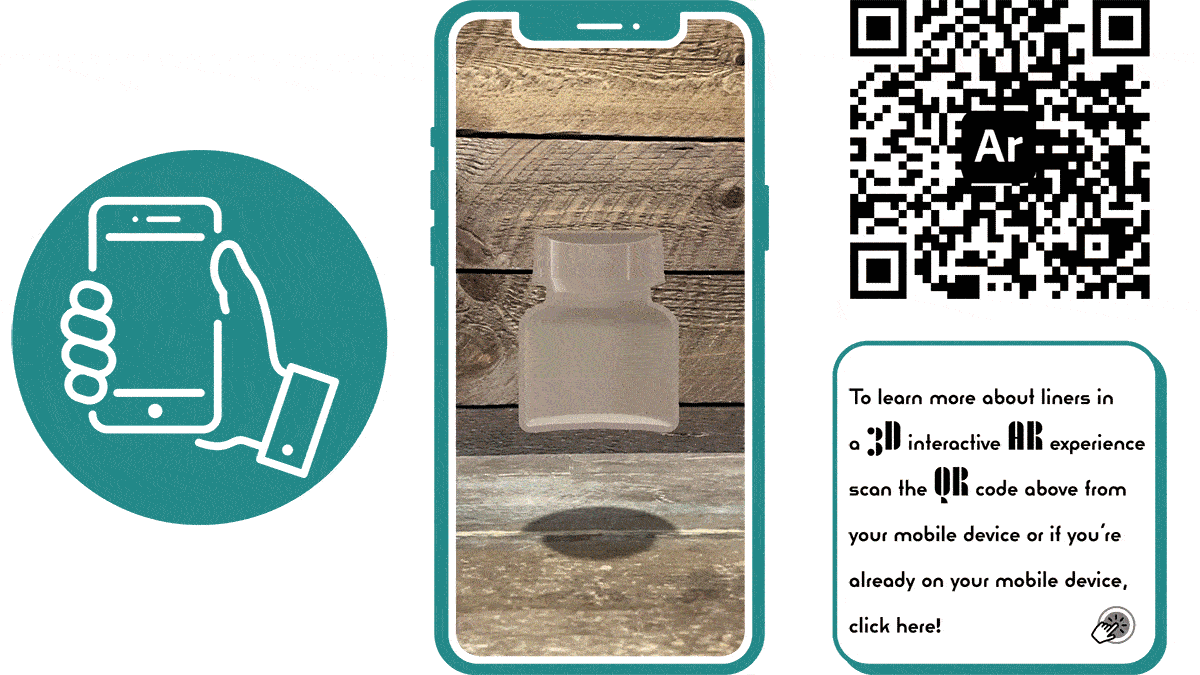Liner is a piece of material that sits between the cap and the bottle. It's primary function is to offer proper sealing of the product and often times it determines the closure's fit and function viability.
Since the liner facing is in direct contact with the product, chemical compatibility is critical. An improper liner not only will shorten shelf life, but it can also allow leakage of the product during transit, causing quality problems.
Our packaging resource guide has devoted a section to talk about liner materials and systems, we'll focus here on common liner types and their general compatibility. As always, information here are for references only. Always perform product compatibility testing to ensure fit and function.
There are many different types of liners, and some are for specific product applications, but for the purpose of this article let's focus on the following:
- PE (Polyethylene) Foam
- F217
- Pulp & Poly
- Pulp & Foil (PAF)
- HS035
- PS22
- Low Density Polyethylene (LDPE) cone
- Plastisol
- Vented
PE Foam and F217
Commonly used for liquid products such as bubble bath formulas, car shampoo, floor cleaners, cold creams, liquid detergents, hand soaps, PE foam is a generic version of the trademarked F217 liner by the Tr-Seal company. PE foam and F217 generally looks like a white colored plastic foam.
Generally speaking, PE Foam and F217 liner can be used for both plastic bottles and glass bottles.
Pulp & Poly
Pulp and Poly is made up of two layers of material: Pulp (cardboard type material), and a thin layer of polyvinyl chloride (PVC). Pulp & Poly liner commonly looks like a shiny, lamented white cardboard paper.
Pulp and Poly liner is commonly found in metal caps and is generally used for jams, jellies, solid and liquid products such as food items. It has a wide range of application because of PVC's high chemical resistance property.
To learn more about pulp and poly liners click here.
Pulp & Foil (PAF)
Similar to Pulp & Poly, but in place of PVC, a layer of foil material is used. This liner commonly looks like a shiny, silver color foil paper.
Since foil has a different chemical resistance property, it is not commonly used with liquid products. While testing can confirm it's compatibility with specific liquid products, it is not as commonly used as Pulp & Poly. But this liner is great when the product is in solid or powder form.
To learn more about pulp and poly liners click here.
HS035
HS035 is an induction seal liner and is used with induction sealing equipment. A thin layer of liner material is electromagnetically activated by the induction sealing machine. Since it "sticks" to the bottle after sealing, it is one of the common form of tamper evident closure. This liner is called an universal induction liner because it can be samples for suitability with glass and a variety of plastic bottles or jars.
HS035 commonly looks silver on the side that make contact with the product, and foamy (or shiny) on the other side. Depending on the specification, it is printed with verbiage similar to "sealed for your protection".
PS22
PS22 is the acronym for pressure sensitive living material that is trademarked by the Tekni-plex company.
A PS22 liner will look white in most cases on both sides, and in many cases the top size will be printed "Sealed for your protection" or similar verbiage. The benefit of this liner is that you do not need secondary eqiupment to apply the liner to the bottle as regular torque application of the cap will make the seal for you.
PS22, or other pressure sensitive liner options, provide good seal properties for dry products on either glass or plastic bottles. In the case of PS22, a 20-mil polystyrene foam iscoated with a proprietary blend of pressure sensitive waxes to ensure a good seal without the use of secondary equipment.
There are other grades of pressure sensitive liners such as PS20 and PS21.
To learn more about pressure sensitive liners click here.
Low Density Polyethylene (LDPE) Cone Liners
This cone liner is suitable for use with essential oils and harsh chemical formulations. Often found in Urea and Phenolic caps, it is widely used in glass bottle applications. Here at O.Berk, we use it for our Amber Pour-Out glass bottle line. While it can be used with plastic bottles it is generally not recommended.
Plastisol
Plastisol is used only in metal caps. It is a polyvinyl chloride component, which is sprayed into the metal cap as a liquid and turns solid when oven cured. Plastisol is effective only when the temperature of the bottle is at 140 degree when applied, as the liner softens and hermetic sealed around the lip of the glass bottle or jar. It is best used for food products.
Vented
Vented liners consist of a liner with a vent and membrane. This allows for airflow without product leakage to prevent damage from pressure changes due to temperature and atmosphere.
Solid and liquid products are suitable for vented liners.
To learn more about vented liners click here.
These are just common liners found in plastic of metal continuous thread caps. There are many others and each requires engineering testing to ensure product compatibility. Some liners, such as the HS035, requires induction sealing equipments. Always check with your product engineers to ensure compatibility, alternatively, you can contact one of our packaging engineers to review your specifications. Please bear in mind that some applications require extensive testing.
Augmented Reality Experience








































